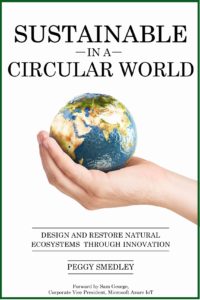By now we have all heard about the Trump Administration’s tariffs and other changing economic factors and how it will have an impact on the construction industry. Truthfully, it is a constantly changing, moving target, and in just a few short months, there have certainly been ups and downs. For today’s blog, let’s look at what all these market changes will mean to the construction industry and the industries that supply materials.
The best way to understand how current economic factors will impact industries such as construction and supply materials is to start by looking backward.
Robert Gulotty, an associate professor in the Dept. of Political Science, University of Chicago, says if we go back to the trade war in 2018, there is a body of research showing that most of the impact of these tariffs was borne by consumers and firms inside the United States. He says the cost is often split, with some of it getting to the final consumer and the rest in the middle, from the retailers and the firms themselves that are purchasing those goods from foreign countries.
For the construction industry, goods like steel, aluminum, lumber, and appliances are often sourced from outside the United States.
FMI suggests the tariffs imposed in 2018 pushed steel prices up 14% before dropping to a 10% increase at the end of 2019. To offset the increases, domestic suppliers filled the gaps since demand did not drop for steel.
While much conversation happened in January 2025 and February 2025 surrounding tariffs, March 4, 2025, is the day Trump’s 25% tariffs on imports from Canada and Mexico went into effect, with some exceptions like Canadian energy. At this time, he also doubled the tariff on all Chinese imports to 20%. In the days that followed a lot has happened, from a short-term exemption for automakers, retaliatory tariffs from other countries, and tariffs specifically on all steel and aluminum imports.
On April 2, 2025, President Donald Trump declared foreign trade and economic practices have created a national emergency. On April 9, 2025, he backed off a bit. We are riding a rather steep roller coaster these days, with both ups and downs.
I had been researching this blog a week earlier and the tariff circumstances were moving faster than a rollercoaster at an amusement park. With all the handwringing, by the time you read this, the 75 countries that were coming to the table might be in a different position with the Administration. So, for the purpose of this blog, let’s look at what this will mean to the construction industry and the industries that supply materials.
What Does This Mean for Construction?
In the short term, changing economic conditions could increase the cost of materials and increase the cost of construction. Certainly, this will depend on the different segments. Infrastructure will have different cost increases compared to residential.
With many contractors having slim margins of less than 5%, something will need to be done to address these escalating costs. FMI suggests contractors will likely need to revisit pricing models, implement escalation clauses, restructure financing, diversify supply chains, and explore alternative materials.
Contractors should look at any current contracts. Some contracts may specifically address tariffs, but most may not. CFMA (Construction Financial Management Assn.) suggests looking for clauses that include: force majeure; delay impacts; escalation clauses; change in law, tax, or regulation; change in conditions; notice requirements; and tariff clauses.
Transparency with the client will also ultimately be key here, as construction material pricing changes in the days ahead.
Changing economic factors, such as tariffs, could also potentially lead to project delays, something not as widely talked about as price hikes. Back in February, Doug Carlson, CEO, NUCA (National Utility Contractors Assn.), urged the Trump Administration to reconsider increases on steel and aluminum tariffs, saying, “The coming tariffs will only delay critical infrastructure projects and drive up their costs to the taxpayer.”

Ultimately, construction companies need to be savvy. Technology, such as AI (artificial intelligence), can help manage cost and schedule, ultimately helping to source materials on time and on budget. Estimating will become more important than ever, as margins are slim. Now becomes the time we must consider technology. If not now, then when?
Want to tweet about this article? Use hashtags #construction #IoT #sustainability #AI #5G #cloud #edge #futureofwork #infrastructure #tariffs


